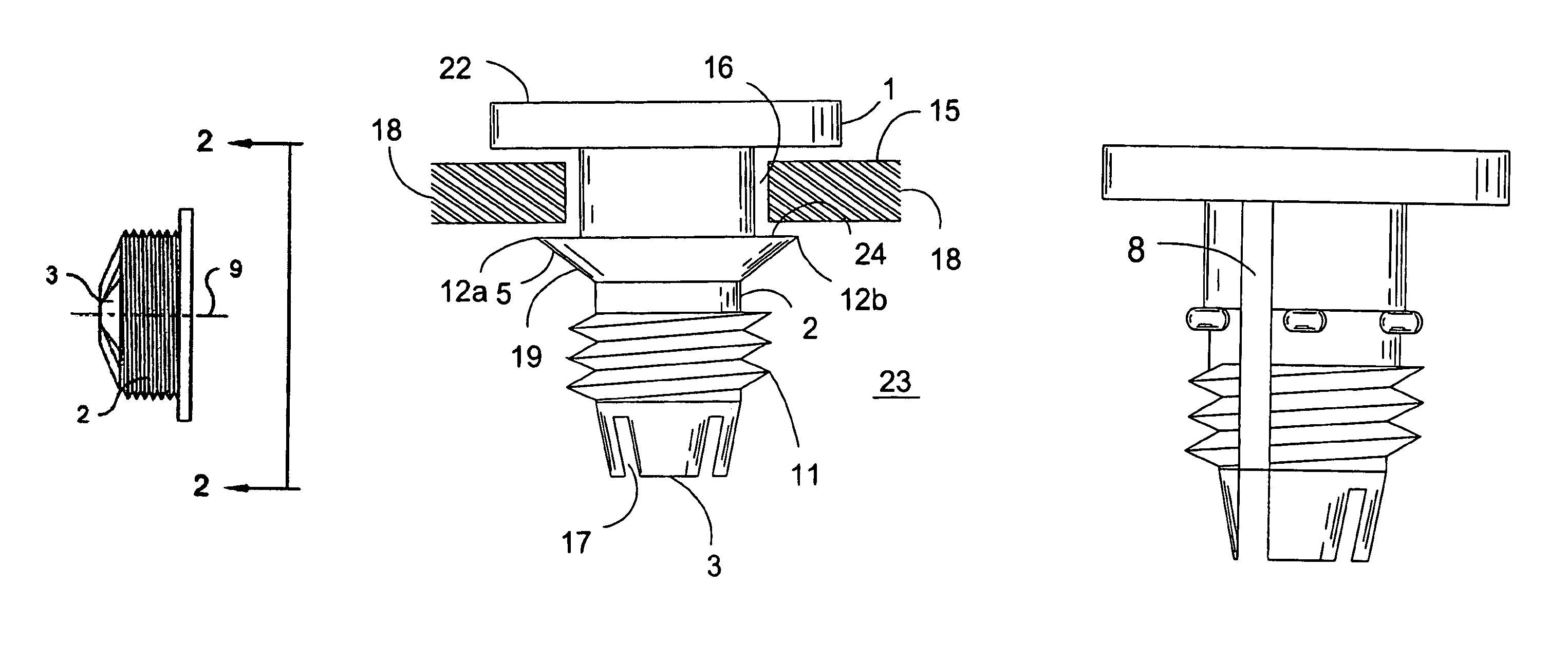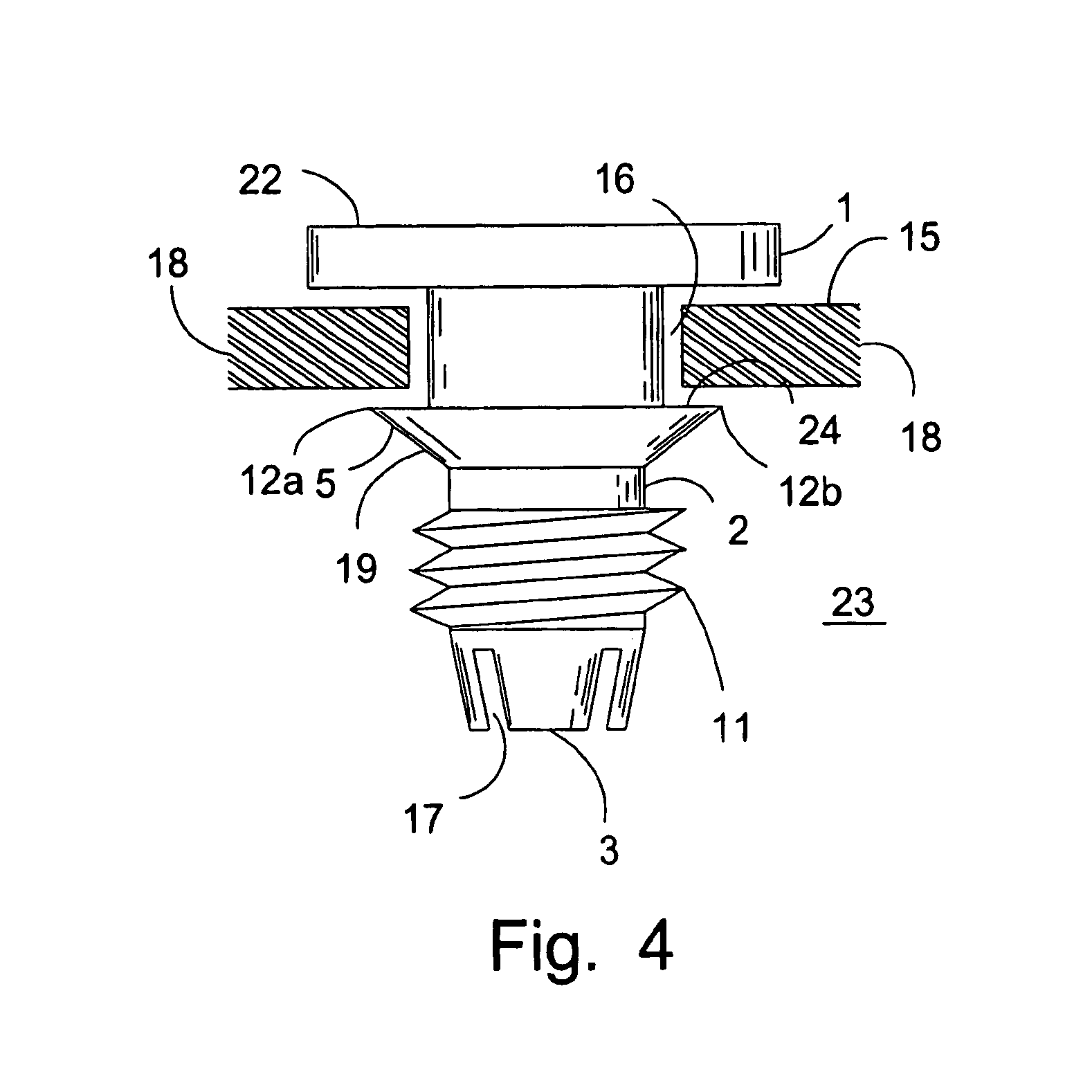Electrical connector
a technology of electrical connectors and connectors, applied in the direction of coupling device connections, insulating bodies, tumbler/rocker switches, etc., can solve the problems of link flexing and breaking, time-consuming and labor-intensive installation, and difficulty in clamping jaws
- Summary
- Abstract
- Description
- Claims
- Application Information
AI Technical Summary
Problems solved by technology
Method used
Image
Examples
Embodiment Construction
[0017]The present invention is a novel, preferably non-conducting, non-metallic electrical connector that allows wire or cable to be inserted into a junction box, but prevents its reversible movement. One preferred embodiment of the electrical connector is illustrated in FIG. 1–FIG. 3. This connector comprises a cylindrical body 2 having external male screw threads, a butt flange 1 at one end, and a cable immobilizer at the other end. The cable immobilizer comprises prongs 3 adapted to prevent the reversible axial movement of the insulated wire or cable to be held by the prongs.
[0018]FIG. 1 illustrates an embodiment where the butt flange is a circular flange. When a circular flange is utilized, the diameter of the flange should be larger than the diameter of a standard threaded hole in a standard junction box. With this configuration the connector can be screwed into the junction box up until the point where the flange fits tightly against the wall of the junction box. The shape of ...
PUM
 Login to View More
Login to View More Abstract
Description
Claims
Application Information
 Login to View More
Login to View More - R&D
- Intellectual Property
- Life Sciences
- Materials
- Tech Scout
- Unparalleled Data Quality
- Higher Quality Content
- 60% Fewer Hallucinations
Browse by: Latest US Patents, China's latest patents, Technical Efficacy Thesaurus, Application Domain, Technology Topic, Popular Technical Reports.
© 2025 PatSnap. All rights reserved.Legal|Privacy policy|Modern Slavery Act Transparency Statement|Sitemap|About US| Contact US: help@patsnap.com



